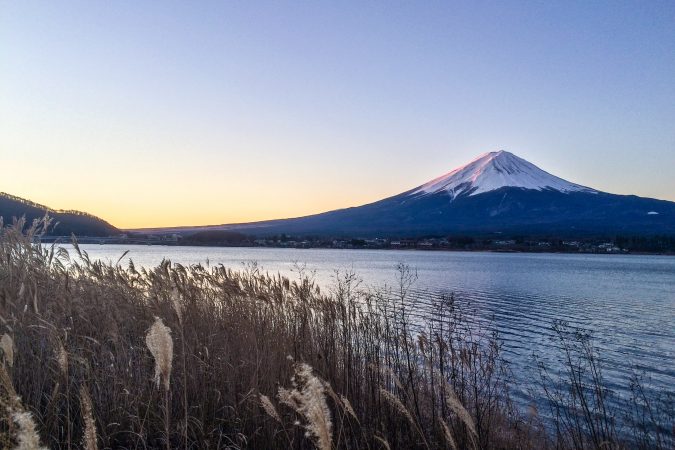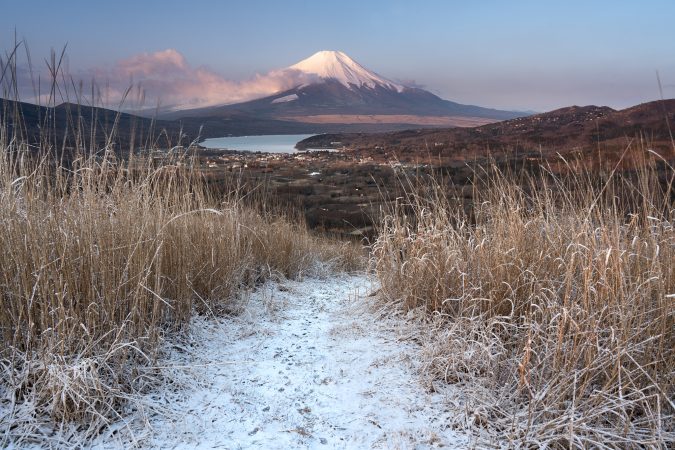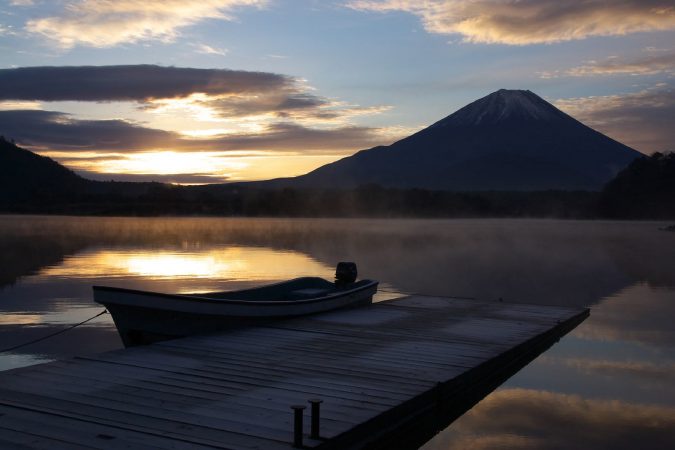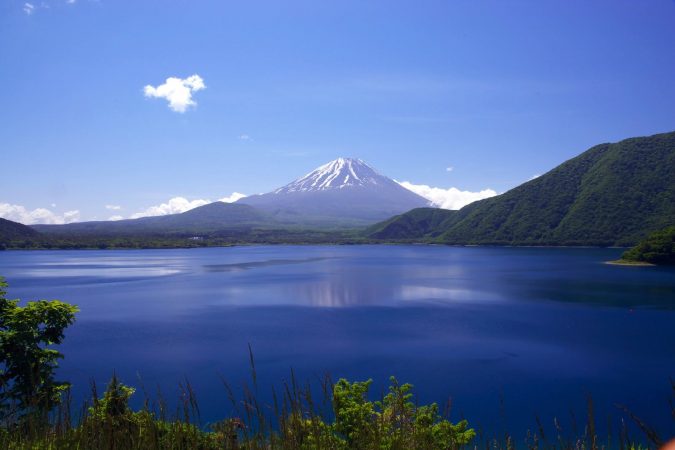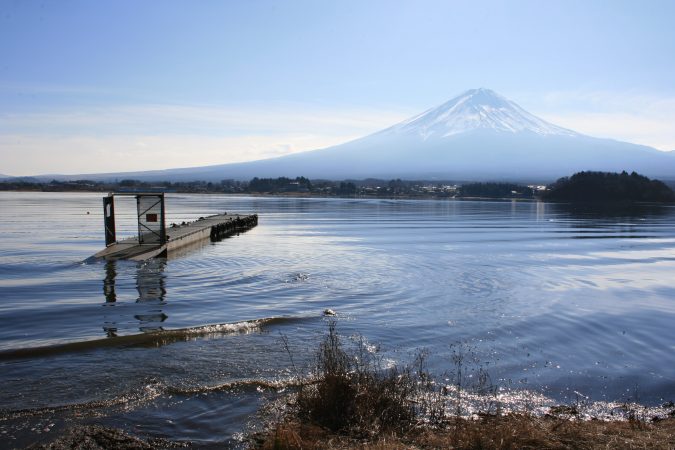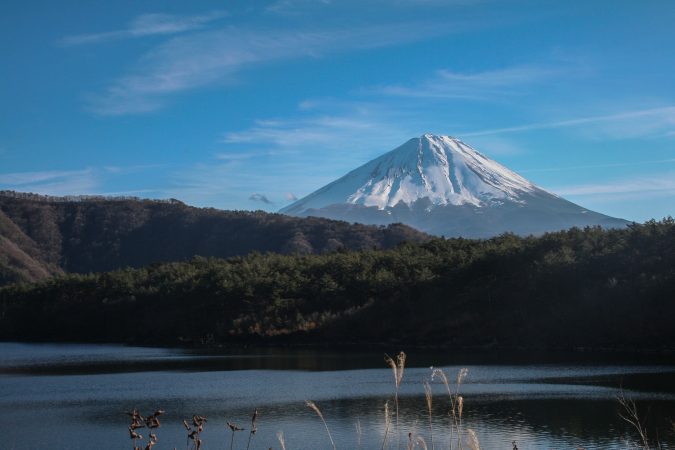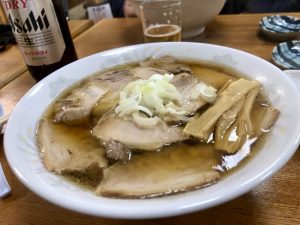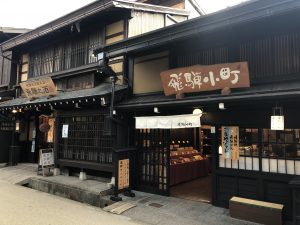Lake Kawaguchiko
Lake Kawaguchiko is one of the Fuji Five Lakes that offer stunning views of Mount Fuji with the convenience of a local train and bus station within 2 hours of Tokyo.
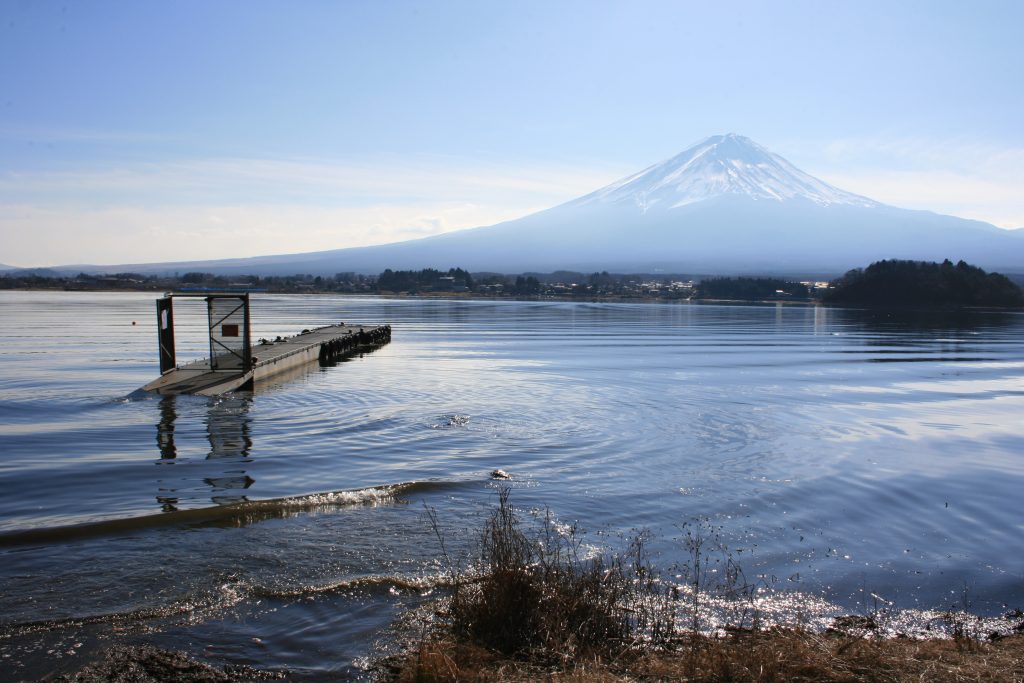
| The Good | The Not-So Good |
| Stunning views of Mt. Fuji | Fairly pointless during summer |
| Most accessible of the Five Lakes | Quite touristy and expensive |
| Great “outdoors” location (biking) |
Why go to Lake Kawaguchiko
There are plenty of reasons to go to Lake Kawaguchiko however the main reason is to view Mount Fuji without having to work too hard for the pleasure. A direct train or bus from Tokyo is fairly inexpensive. You can also get there by car, or include the lake as part of a Hakone visit or before/after visiting Fuji Q. Other reasons are the outdoor activities, which “When Japan” has no experience of so you will have to search for them yourself. You should however conciser hiring a bike while there, after reminding yourself that Japan gets hot and busy during summer (i.e. don’t come here during summer; we did warn you).
When to go to Lake Kawaguchiko
“When Japan” is a site dedicated to telling you when to go to Japan. A big part of Japan’s identity and certainly a unique experience for tourists is viewing Mount Fuji in all it’s snow capped glory, with the blue sky as a backdrop. In fact, there are many, many different views of Mt. Fuji depending on the conditions (weather, position, etc.) so you may want to check out this article (Japanese) for a list. “When Japan” has a list of photographed Mount Fuji views here, including Crimson Fuji, Double Fuji and Blue Fuji. These are the three you are more likely to see if you follow the plans in this article.
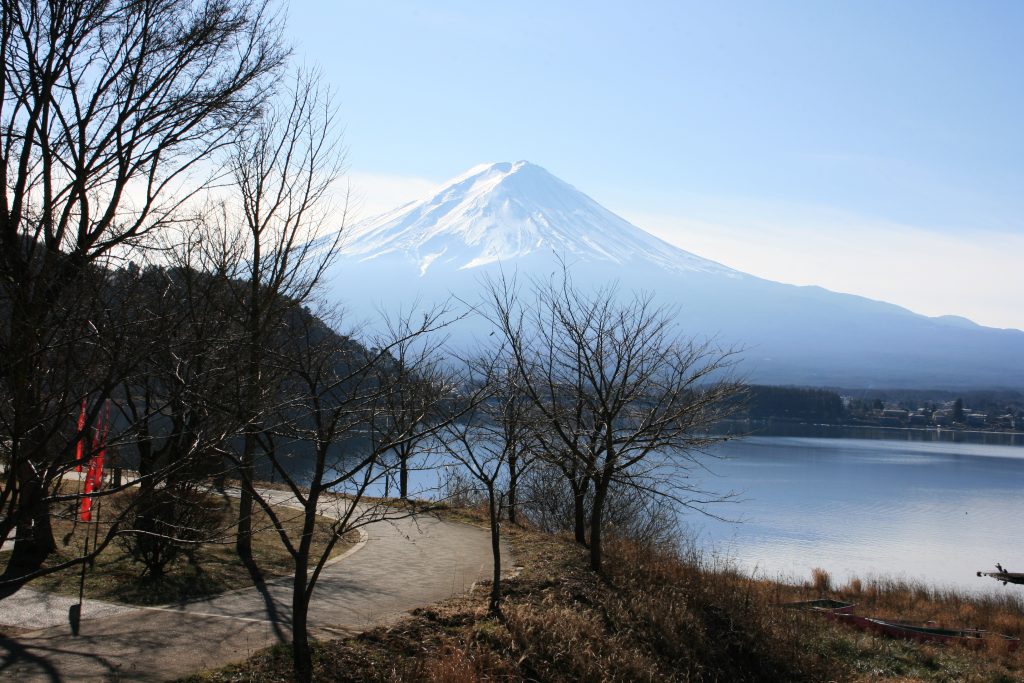
Mount Fuji in December 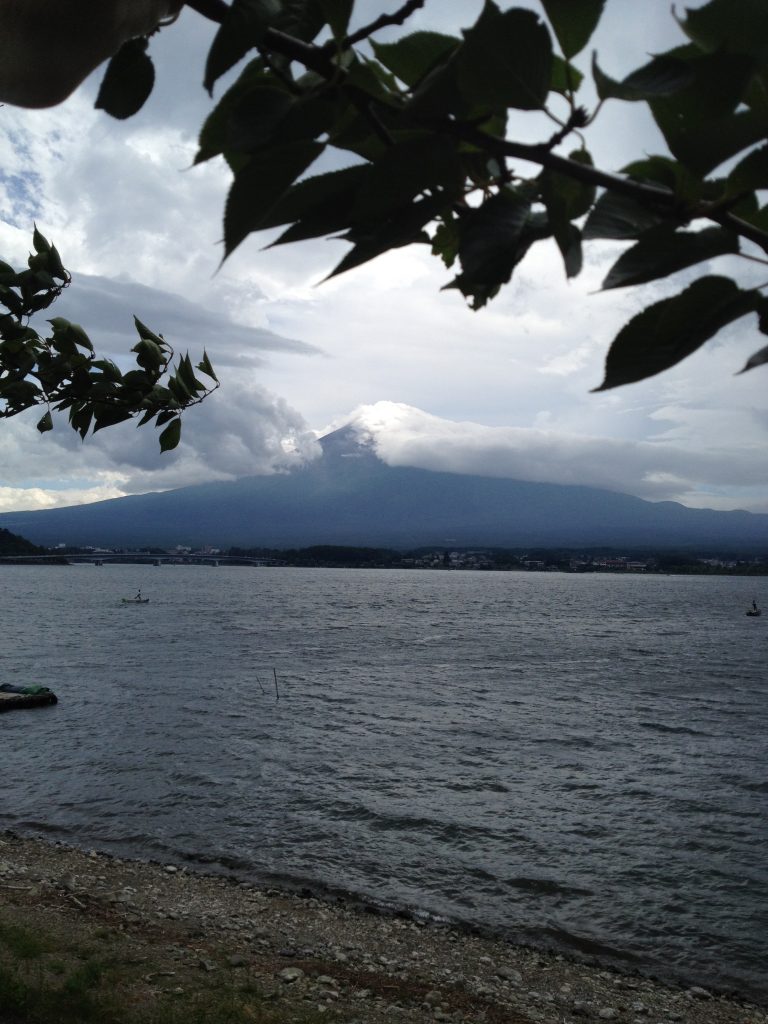
Mount Fuji (?) in August
Snow arrives on Mount Fuji from late October, peaks during the winter and starts to melt over spring. By June the snow is usually almost gone and by July it has totally melted away. The end of June and throughout July is the rainy season in Japan anyway so Mount Fuji will be mostly obscured by cloud. Once the rain clouds move away in late June, the snow will have gone and the summit will be perpetually shrouded in cloud until the fall.
| Jan | Feb | Mar | Apr | May | Jun |
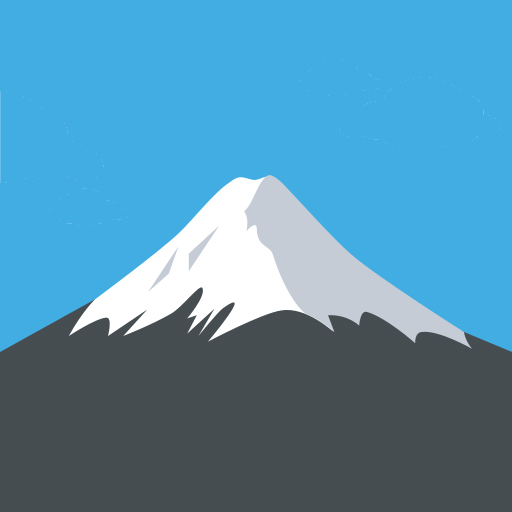 |  | 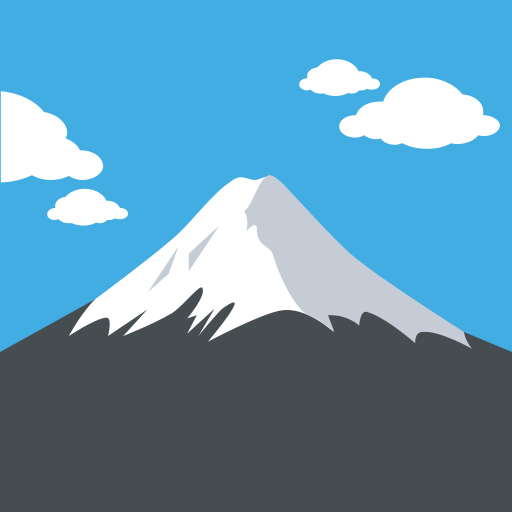 |  | 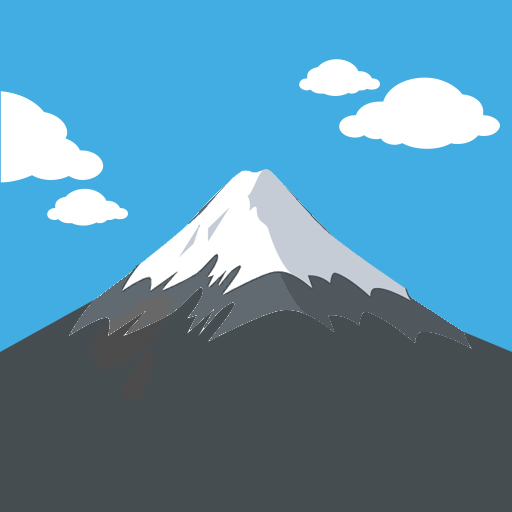 | 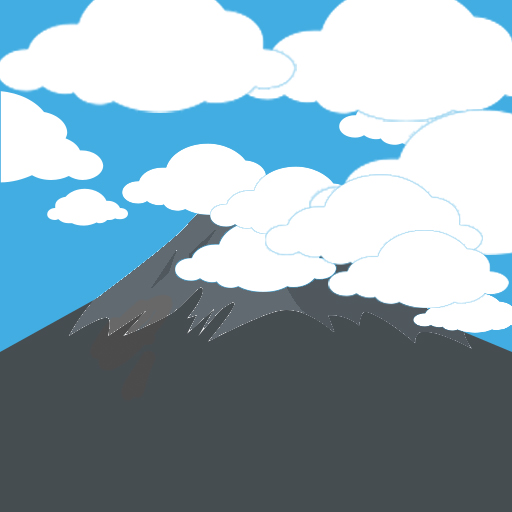 |
| Jul | Aug | Sept | Oct | Nov | Dec |
 |  |  |  |  |  |
Most common view of Mount Fuji by month (each day will vary of course – blue skies do occur even in July). Mount Fuji Icons above modified from this source.
If you want the highest chance of seeing the Mount Fuji in all the photos, December to March is the best time. The sky is relatively pollution-free, clouds are minimal as the humidity is low, Mount Fuji is snow capped and tourists are few and far between.
Caution!! Check the weather before you go!
Not every day will allow good views of Mount Fuji. Check the weather before you go! Consider canceling your plans if Mount Fuji is shrouded in cloud otherwise you’ll have a wasted journey.
Walking around the Lake to view Mount Fuji
The entire perimeter of the lake can be traversed on foot and there are signs that give you routes and distances. Below is a course that “When Japan” tried in 2009 and almost died because it is over 16km and that was way too much in one go. This is was December, which is dead time for tourists, so the usual lake activities such as boating are shut down.
In reality, you don’t need to walk the whole route. Walk across the bridge and around until the Big Rock Park (it doesn’t have an English name) – there are great views from the lake shore. After that point, houses and trees start to get in the way and at the far west side of the lake Mount Fuji cannot be seen at all (see this awesome interactive “can we see Mount Fuji” website with photo examples – Japanese but there is an English layer you can select – top right icon). Returning back (over the bridge) is less than double the distance however continuing round is over 3x the distance.
Best views around the Lake? – Not everywhere!
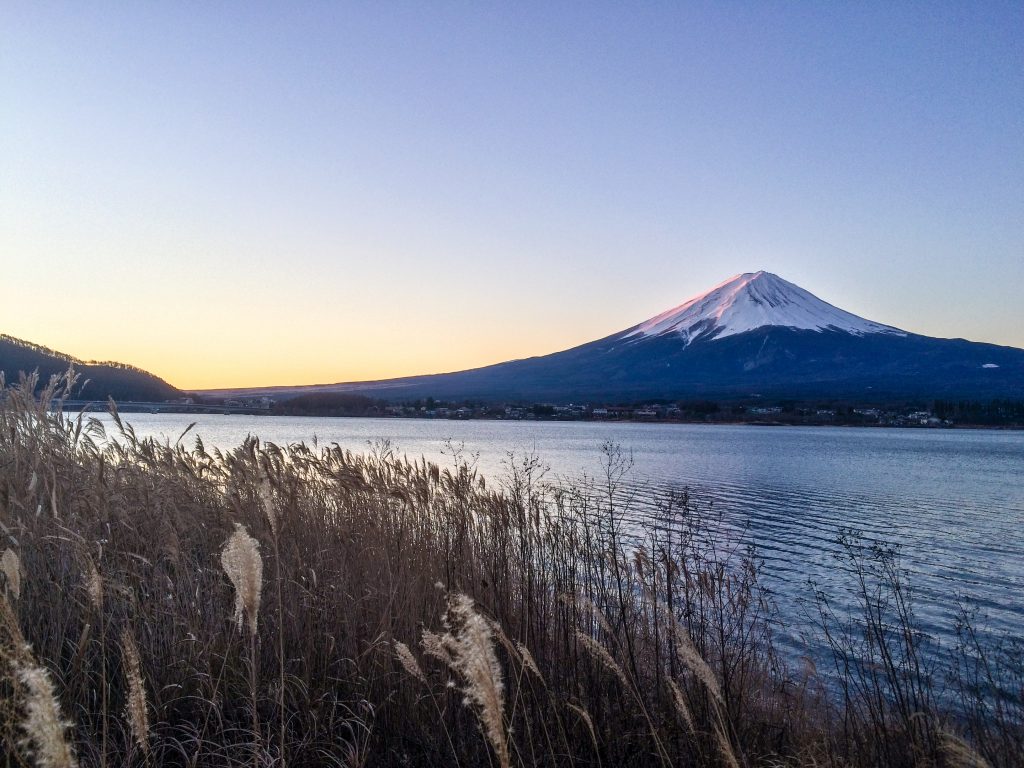
The hotels around the area shaded red (below) don’t have a 100% view of Mount Fuji from their windows. You may get half a Fuji or miss some of the slope. If you want the best views you will have to go further round to the far side of the lake. In general hotels will have backside rooms (no view) and front side rooms (view) plus they will charge more for higher floors. Always check the view from the window before booking and email the hotel to confirm the view as guaranteed. You may be disappointed if the hotel window view in the photo is generic and not the one for your specific room.
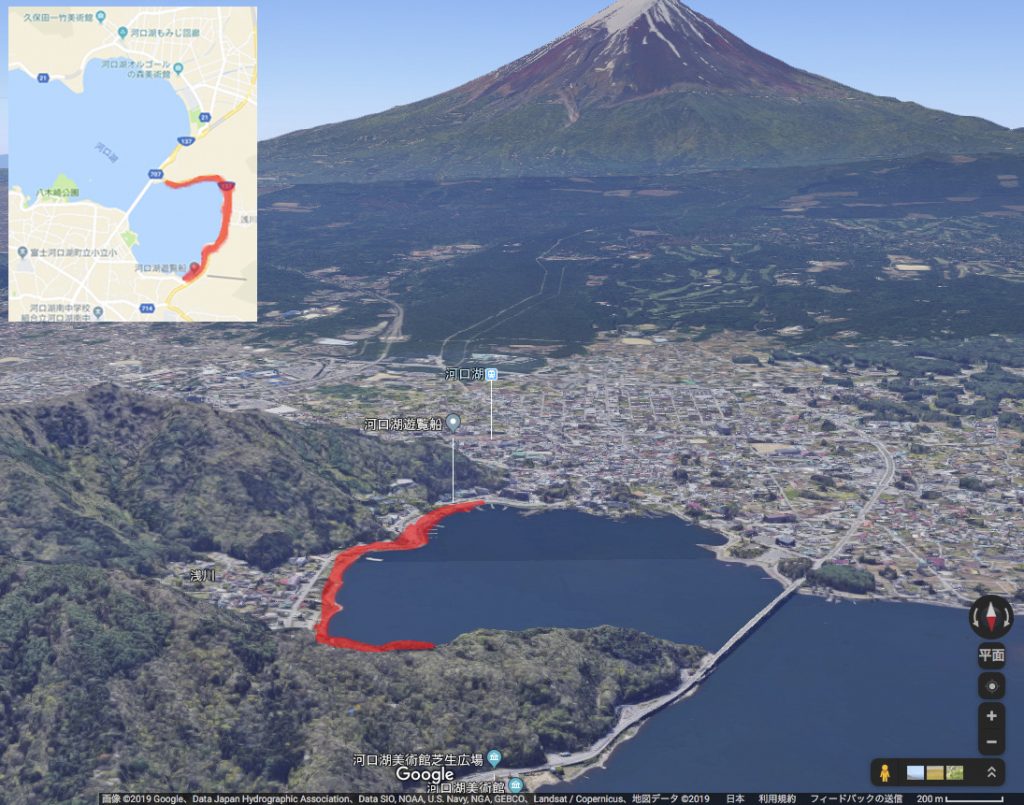
Better views are had from further around the lake edge. Note that the map below is not just hotels but also what you see when walking. You cannot see Mount Fuji from the side closest to Mount Fuji. The town is in the way. You also cannot see Mount Fuji at all from the far west side – hence “When Japan” doesn’t recommend you walk around there specifically. Obviously, hotels on the far side in the green area are very expensive for their lake side rooms and it doesn’t generally matter about the floor here. You will see everything (but do check anyway just in case there are trees or other buildings in the way of some windows – it does happen). Hotels on the near side to Mount Fuji have limited views unless on higher floors. It depends on the hotel. Expect the first 2-4 floors to have no view or limited views. Just because a hotel says “View of Mount Fuji from your room” doesn’t mean it will be “all of Mount Fuji”. You may only get the top half if your room is too low. Confirm what you are paying for!
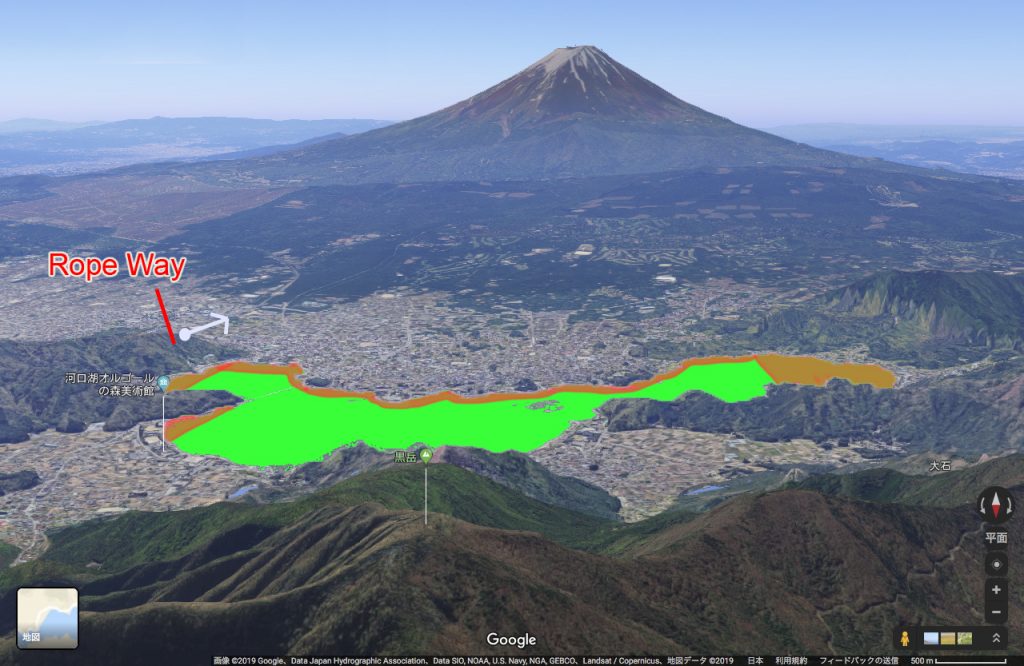
Hiring a bike
You can hire a bike to help you out, which is certainly recommended outside of summer months. Some local rental places close over the winter due to lack of tourists, however it does seem that a few locations are open all year round (here and here). If you aren’t a biker then spend the money and hire an electric type for two days so you can go to Lake Saiko also without destroying your legs. “When Japan” has stayed the night in a local hot spring with room views of Mount Fuji, and also visited the lake for a day-trip; so both options are in this article later on.
Hiring a car
Add details. Highly recommended as you can easily get to Lake Saiko and the Ice and Wind Caves by car without relying on the buses that are fairly infrequent. Also can go to the falls here, which is a nice outing and impossible to visit by bus (so only Japanese there). There is a car hire place here, opposite the station, that hires out Mini Coopers with open tops; great on a warm spring or fall day (maybe not during summer?). Their website isn’t in
Traveling by bus
You can take buses around the lake and to and from the major tourist attractions in Lake Saiko and the Ice and Wind Caves. See details on this site. Below is a map part of the network. There is more information on the “Green Line” bus in the Lake Saiko article.
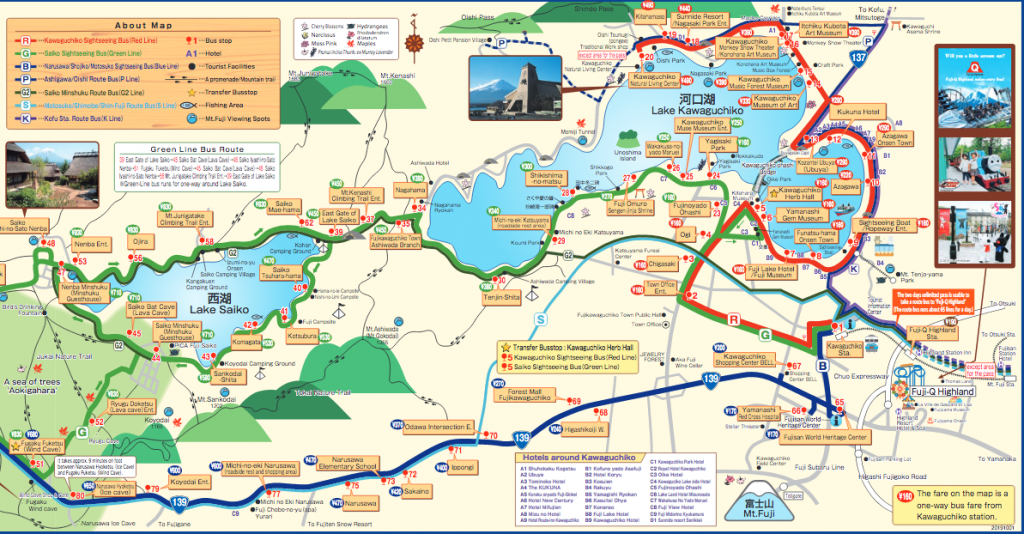
Rope-way – the best view?
Did you know there is a rope-way up a mountain with stunning views of Mount Fuji? Why bother walking around the lake when you can just pay and go high up? “When Japan” highly recommends this if you hate walking. It is very close to the station and can be fitted into the end of a day. Due to the position of the sun (the ropeway is north of Mount Fuji so the sun is directly overhead to your south) the view will be quite glaring unless the sun is at a lower angle morning or late afternoon.
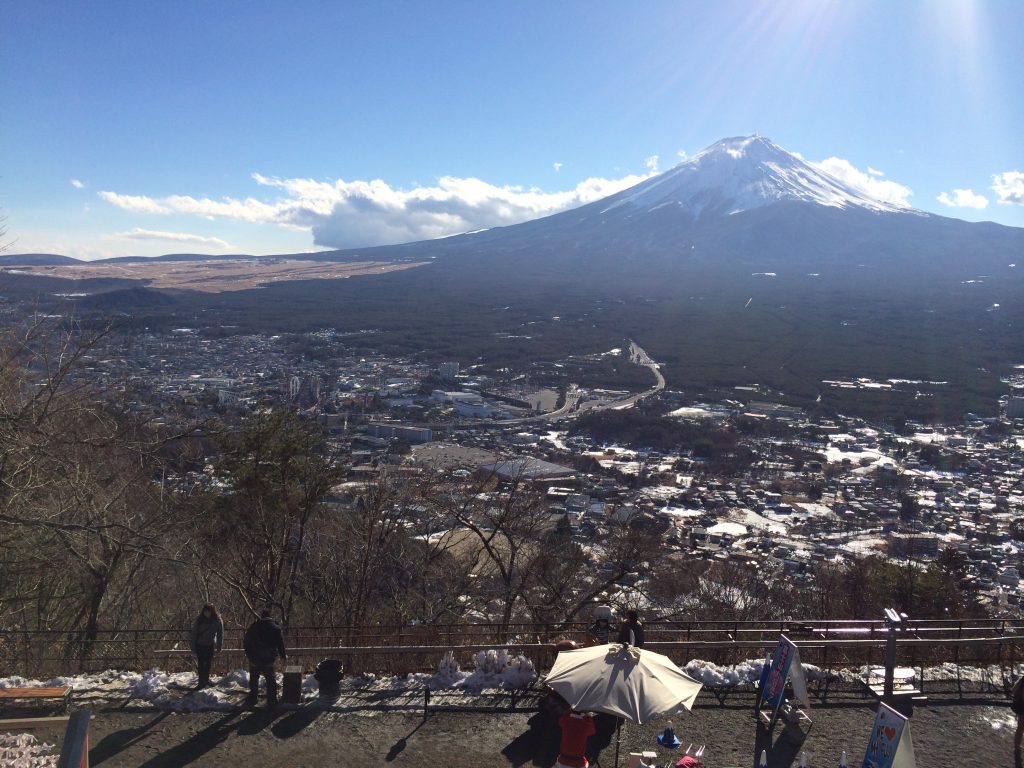
Day-Trip Walking Itinerary
- Check the weather for Lake Kawaguchiko and Mount Fuji. If you weather forecast isn’t like this one (website), then think again. You need close to zero cloud cover for the full experience. Obviously as a tourist you don’t live in Japan so can’t pick and choose a day at will, however if you end up with a day that is mostly cloudy, adjust your schedule as much as you can and try again another day.
- Book a bus online (around ¥2000 for adults) the night before and in the morning head over to the bus station. The bus trip is around two hours and will take your direct to Lake Kawaguchiko via Fuji Q. You can go by JR train if you have a JR pass. Other bus companies are available but their English language homepage doesn’t support online booking and they don’t even tell you where you can buy tickets or where the stations are, so don’t support such poor companies.
- Get off and have a look around the local area first. There is a nice park nearby and if you are into precious stones, a Gem Museum nearby.
- Have lunch. If you are outside of tourist season then your choices are limited to around the rope-way area and a lot of it is pretty ordinary. If you want good food, stay overnight at a hot spring hotel.
- Start your walk around the lake until you’ve had enough, then walk back over the bridge. Should take you a couple of hours.
- Head up the rope-way and take in the view from the top.
- Go home and have dinner in Tokyo or at your next destination (many people stay in Hakone or Izu Peninsula (“When Japan” recommends Izu as there are less foreign tourists).
Over-night stay itinerary
Same as above just stay at a hotel with room views of Mount Fuji. “When Japan” has stayed in The Fuji Lake Hotel and The Sunnide Resort. Any hotel around Lake Kawaguchiko will offer rooms with a Mount Fuji view of varying quality. The Fuji Lake Hotel is on the lake side closest to Mount Fuji, so the bottom floors have no view. The picture below (left) is from a 4th floor room with private Hot Spring Bath, however you cannot see Mount Fuji unless you stand up! There are also higher floors where you can see Mount Fuji while actually sitting in the bath. The sitting area in the room itself it on a platform so you can eat a delicious Kaiseki dinner while viewing Mount Fuji.
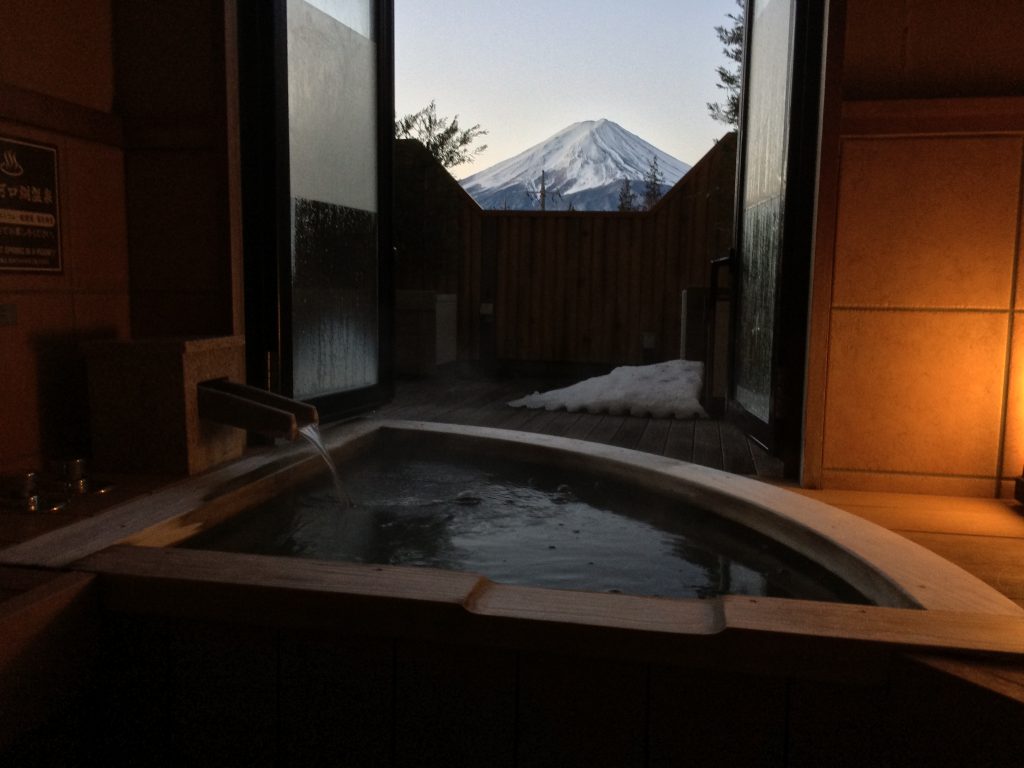
4th Floor view from The Fuji Lake Hotel 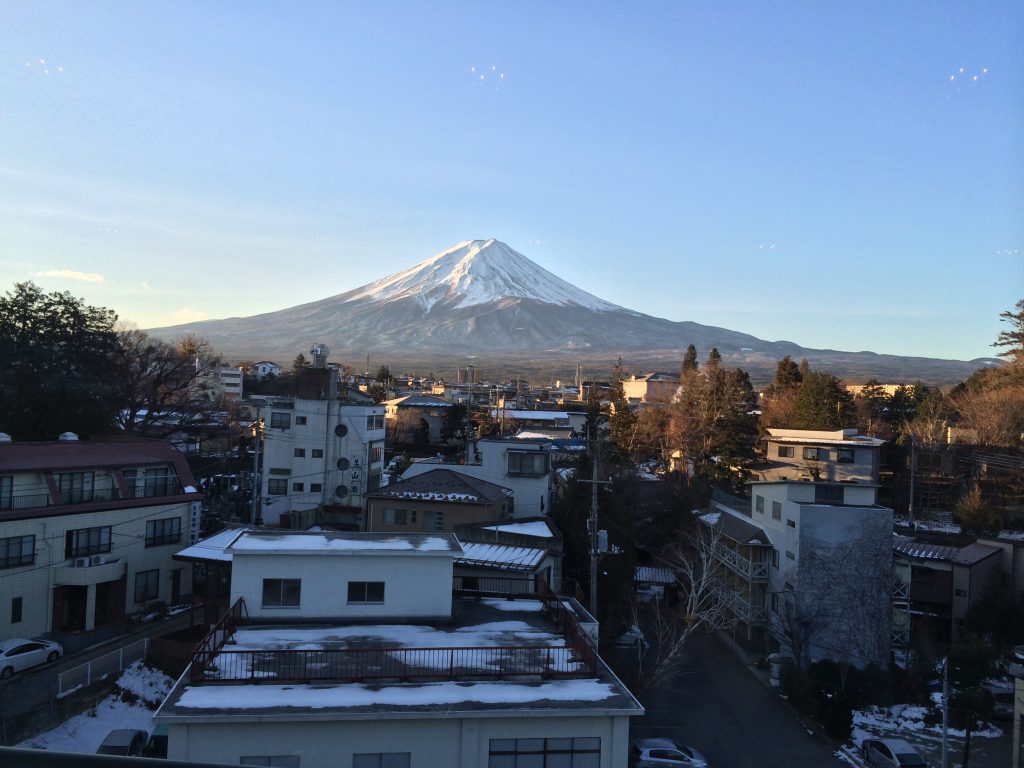
Breakfast room view, The Fuji Lake Hotel
The Sunnide Resort is on the opposite side of the lake from Mount Fuji and so the views are much better as you can see the lake below Mount Fuji.
